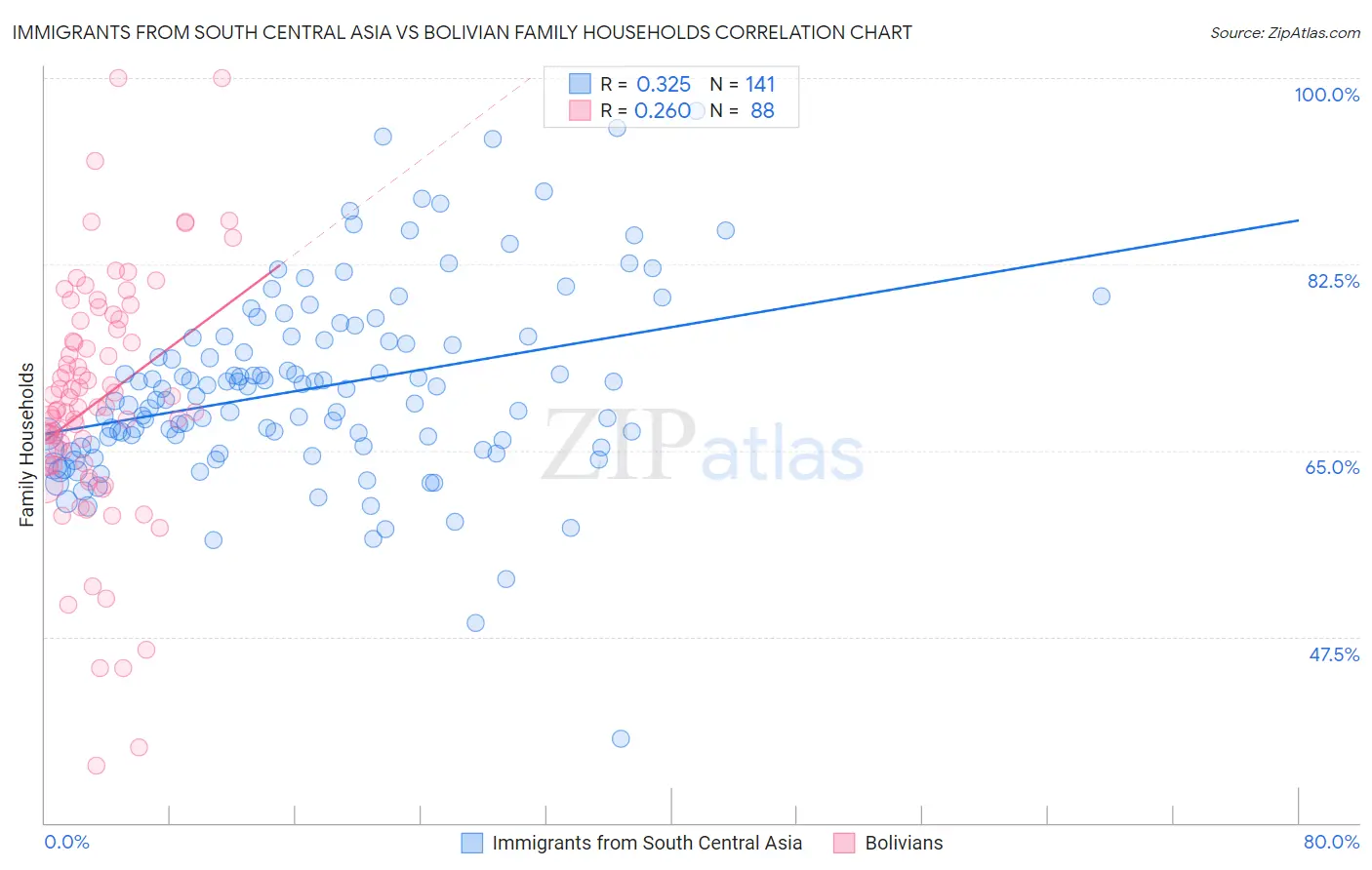Immigrants from South Central Asia vs Bolivian Family Households
COMPARE
Immigrants from South Central Asia
Bolivian
Family Households
Family Households Comparison
Immigrants from South Central Asia
Bolivians
66.4%
FAMILY HOUSEHOLDS
100.0/ 100
METRIC RATING
49th/ 347
METRIC RANK
66.5%
FAMILY HOUSEHOLDS
100.0/ 100
METRIC RATING
47th/ 347
METRIC RANK
Immigrants from South Central Asia vs Bolivian Family Households Correlation Chart
The statistical analysis conducted on geographies consisting of 472,677,474 people shows a mild positive correlation between the proportion of Immigrants from South Central Asia and percentage of family households in the United States with a correlation coefficient (R) of 0.325 and weighted average of 66.4%. Similarly, the statistical analysis conducted on geographies consisting of 184,628,552 people shows a weak positive correlation between the proportion of Bolivians and percentage of family households in the United States with a correlation coefficient (R) of 0.260 and weighted average of 66.5%, a difference of 0.070%.

Family Households Correlation Summary
| Measurement | Immigrants from South Central Asia | Bolivian |
| Minimum | 37.9% | 35.4% |
| Maximum | 97.0% | 100.0% |
| Range | 59.0% | 64.6% |
| Mean | 70.8% | 69.6% |
| Median | 69.8% | 69.1% |
| Interquartile 25% (IQ1) | 65.3% | 63.8% |
| Interquartile 75% (IQ3) | 75.5% | 76.8% |
| Interquartile Range (IQR) | 10.2% | 13.1% |
| Standard Deviation (Sample) | 9.0% | 11.6% |
| Standard Deviation (Population) | 9.0% | 11.5% |
Demographics Similar to Immigrants from South Central Asia and Bolivians by Family Households
In terms of family households, the demographic groups most similar to Immigrants from South Central Asia are Immigrants from Venezuela (66.4%, a difference of 0.050%), Navajo (66.4%, a difference of 0.070%), Native/Alaskan (66.4%, a difference of 0.090%), Arapaho (66.5%, a difference of 0.10%), and Venezuelan (66.5%, a difference of 0.12%). Similarly, the demographic groups most similar to Bolivians are Immigrants from Venezuela (66.4%, a difference of 0.020%), Arapaho (66.5%, a difference of 0.030%), Venezuelan (66.5%, a difference of 0.050%), Asian (66.5%, a difference of 0.070%), and Apache (66.5%, a difference of 0.12%).
| Demographics | Rating | Rank | Family Households |
| Mexican American Indians | 100.0 /100 | #38 | Exceptional 67.0% |
| Immigrants | El Salvador | 100.0 /100 | #39 | Exceptional 67.0% |
| Guamanians/Chamorros | 100.0 /100 | #40 | Exceptional 66.6% |
| Immigrants | Bolivia | 100.0 /100 | #41 | Exceptional 66.6% |
| Menominee | 100.0 /100 | #42 | Exceptional 66.5% |
| Apache | 100.0 /100 | #43 | Exceptional 66.5% |
| Asians | 100.0 /100 | #44 | Exceptional 66.5% |
| Venezuelans | 100.0 /100 | #45 | Exceptional 66.5% |
| Arapaho | 100.0 /100 | #46 | Exceptional 66.5% |
| Bolivians | 100.0 /100 | #47 | Exceptional 66.5% |
| Immigrants | Venezuela | 100.0 /100 | #48 | Exceptional 66.4% |
| Immigrants | South Central Asia | 100.0 /100 | #49 | Exceptional 66.4% |
| Navajo | 100.0 /100 | #50 | Exceptional 66.4% |
| Natives/Alaskans | 100.0 /100 | #51 | Exceptional 66.4% |
| Colombians | 100.0 /100 | #52 | Exceptional 66.3% |
| Afghans | 100.0 /100 | #53 | Exceptional 66.3% |
| Immigrants | Colombia | 100.0 /100 | #54 | Exceptional 66.3% |
| Immigrants | Immigrants | 100.0 /100 | #55 | Exceptional 66.1% |
| Immigrants | Hong Kong | 100.0 /100 | #56 | Exceptional 66.1% |
| Pennsylvania Germans | 100.0 /100 | #57 | Exceptional 66.1% |
| Immigrants | Asia | 100.0 /100 | #58 | Exceptional 66.1% |